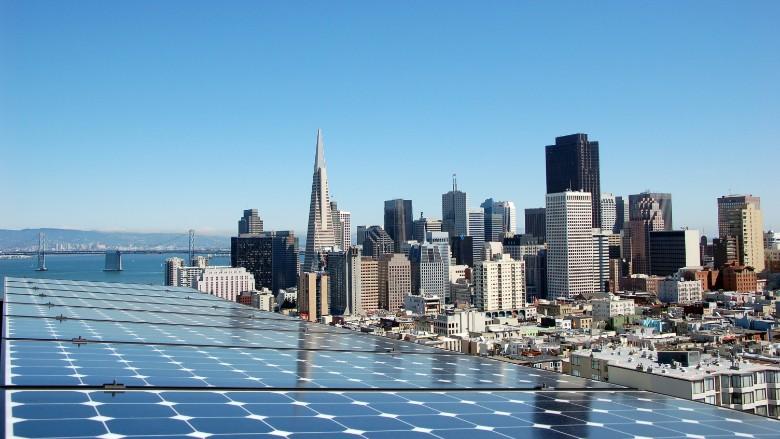It’s a “good news, bad news” scenario for Northern California solar.
Pacific Gas and Electric provides service to more electric customers than any other utility in the country, so when they announce that they are now receiving 5% (approximately 2.4 Gigawatts) of their generation from independently owned rooftop solar, it is a BIG deal. Not only because it represents the ongoing success and growth in the solar market, but because it marks the end of net metering for PG&E customers who wish to own new solar arrays. It marks another milestone along the road from independent early adopters to large-scale central station solar generation, but it by no means means an end to rooftop solar.
In January 2016, solar advocates and California’s utility companies debated the future of net energy metering (NEM) before the California Public Utilities Commission (CPUC) and reached a compromise that allows existing solar owners to continue to receive retail credit for the power that they provide to the grid for 20 years from the commissioning of their system. New solar customers, however, will have to pay a one-time fee, estimated at $75 to $150, to connect their system to the grid. They also will face increased monthly charges to pay for costs shared by most utility customers, such as subsidizing electricity bills for low-income households. Those increased charges will add about $5 to a typical solar homeowner’s monthly bill.
Finally, to pay for the energy they still use from the grid, new solar customers will switch to “time of use” electricity rates, which charge different prices at different times of day. PG&E is the second California utility to have the new “NEM 2.0” rules kick in- San Diego Gas and Electric Co. was the first utility to hit that mark, reaching it in June.
PG&E, which serves most of Northern and Central California, now has more than 275,000 customers with their own solar arrays. Another 6,000 hook up every month. That’s more than any other utility in the United States, according to the company, so it isn’t surprising that they are one of the first to move away from the existing net metering model. NEM was vital to allowing early adopters fair access to the grid, but times have changed. The installed cost of solar has dropped and new financing and technological alternatives are making traditional net metering less essential. NEM 2.0 is designed to allow the utility companies to manage the distributed energy sources (DES) like indie and rooftop solar in a way that more closely matches demand. “The lead-up to the transition has been smooth. There was not a big surge in interconnections as PG&E approached the cap, so the transition did not come suddenly and catch customers off guard,” notes Brad Heavner, policy director of the California Solar Energy Industries Association (CALSEIA), which led the fight to protect NEM against utility opposition. Heavner added, “The industry should be prepared for some hesitation in the market as the new tariff sinks in, but I expect it to be short-lived because NEM 2.0 continues to offer substantial value to most customers.”
“The lead-up to the transition has been smooth. There was not a big surge in interconnections as PG&E approached the cap, so the transition did not come suddenly and catch customers off guard,” notes Brad Heavner, policy director of the California Solar Energy Industries Association (CALSEIA), which led the fight to protect NEM against utility opposition. Heavner added, “The industry should be prepared for some hesitation in the market as the new tariff sinks in, but I expect it to be short-lived because NEM 2.0 continues to offer substantial value to most customers.”
CALSEIA estimates the combined impact for a typical residential solar customer will be in the neighborhood of $10.00 per month compared to NEM 1.0, so the new rules will not be a deal breaker for most customers looking to go solar.
The real question mark in the NEM 2.0 plan lies in the time-of-use (TOU) rate requirements. TOU rates are designed to discourage use of electricity during peak demand hours, usually in the afternoon when air conditioning demand is the highest. For solar customers currently, TOU works to their advantage, as peak demand comes at the time of day that coincides with peak solar generation. However, if peak periods shift to the evening hours, solar customers will be selling low and buying high.
According to Solar Industry Magazine, Each of the California investor-owned utilities has proposed evening peak hours due to shifts in system peak caused by solar already on the grid – both utility-scale and distributed. Pacific Gas & Electric’s (PG&E) main residential TOU rate already has a 3:00 p.m. to 8:00 p.m. peak period. San Diego Gas & Electric (SDG&E) has proposed moving its peak period to 4:00 p.m. to 9 p.m. Depending on the specifics of the rates set by the CPUC, additional expenses may affect solar users.
However, the real game changer when it comes to TOU will be the increased use of energy storage and battery technology. Original net metering rules may have worked for several decades as solar came of age, but look for NEM 2.0 to become obsolete in a much shorter time. Those who are keeping their eyes on the rise of storage are already thinking about NEM 3.0.





